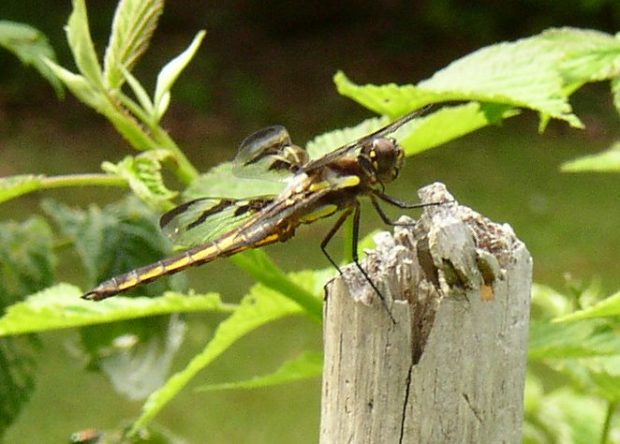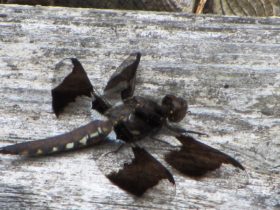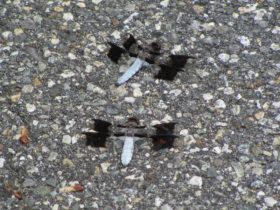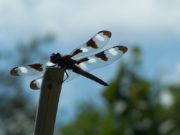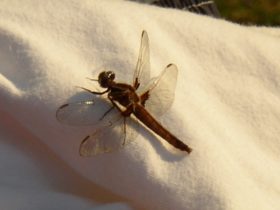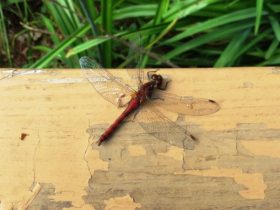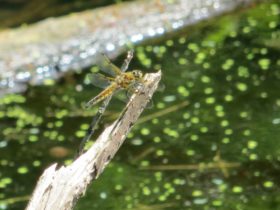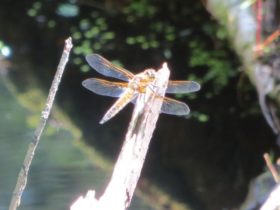Dragonflies and Damselflies
General Description
Dragonflies and damselflies are scientifically classified under the order Odonata. These medium to large insects have body lengths ranging from just over half an inch to just under five inches. They are often seen flying rapidly over streams and lakes, or through gardens at dusk, often following regular flight paths every day.
Damselflies and dragonflies are very similar but dragonflies’ hind wings are slightly broader than the forewings; damselflies have both wings that are more or less similar size. Wings are held horizontally to the body in dragonflies and vertically in damselflies when at rest. Adults prey on flying insects catching them on the wing with their legs. These were sighted in mid-coast Maine in mid-summer.
White Tail Dragon Fly
While the male of this dragon fly has a white abdomen, the female’s is brown with a row of yellow spots. Usually they are found near ponds, slow streams, sheltered bays and reedy shallows. This one was sighted near a coastal inlet.
Twelve-spot Skimmer
This dragonfly likes to be near ponds of slow moving water where it can catch small flying insects.
With a body about two inches and and a wing span of about three inches, it is often seen resting on a lily pad awaiting insects.
Half-banded Toper Male
The Toper’s range reaches from New Brunswick to Virginia and west to Illinois. The male’s abdomen is red, but the female’s is olive green. They are generally found near shallow, slow moving water such as ponds, streams and marshes.
Four-spot Skimmer
This dragonfly was found in Litchfield in a boggy area near Woodbury Pond. Its habitat is reported to be near ponds and slow moving areas of rivers. Range is from Labrador to New Jersey and west. Audubon notes that often the “female rests on a plant within reach of the water.” This is the case in these photos at N44° 11′ 50.82″ W69° 56′ 43.32″.
Additional resources
Commonwealth Scientific and Industrial Research Organisation . “Odonata: dragonflies and damselflies.” http://www.ento.csiro.au/education/insects/odonata.html (accessed October 9, 2016)
National Audubon Society. Field Guide to North American Insects & Spiders. New York. Chanticleer Press Inc. 1998.


